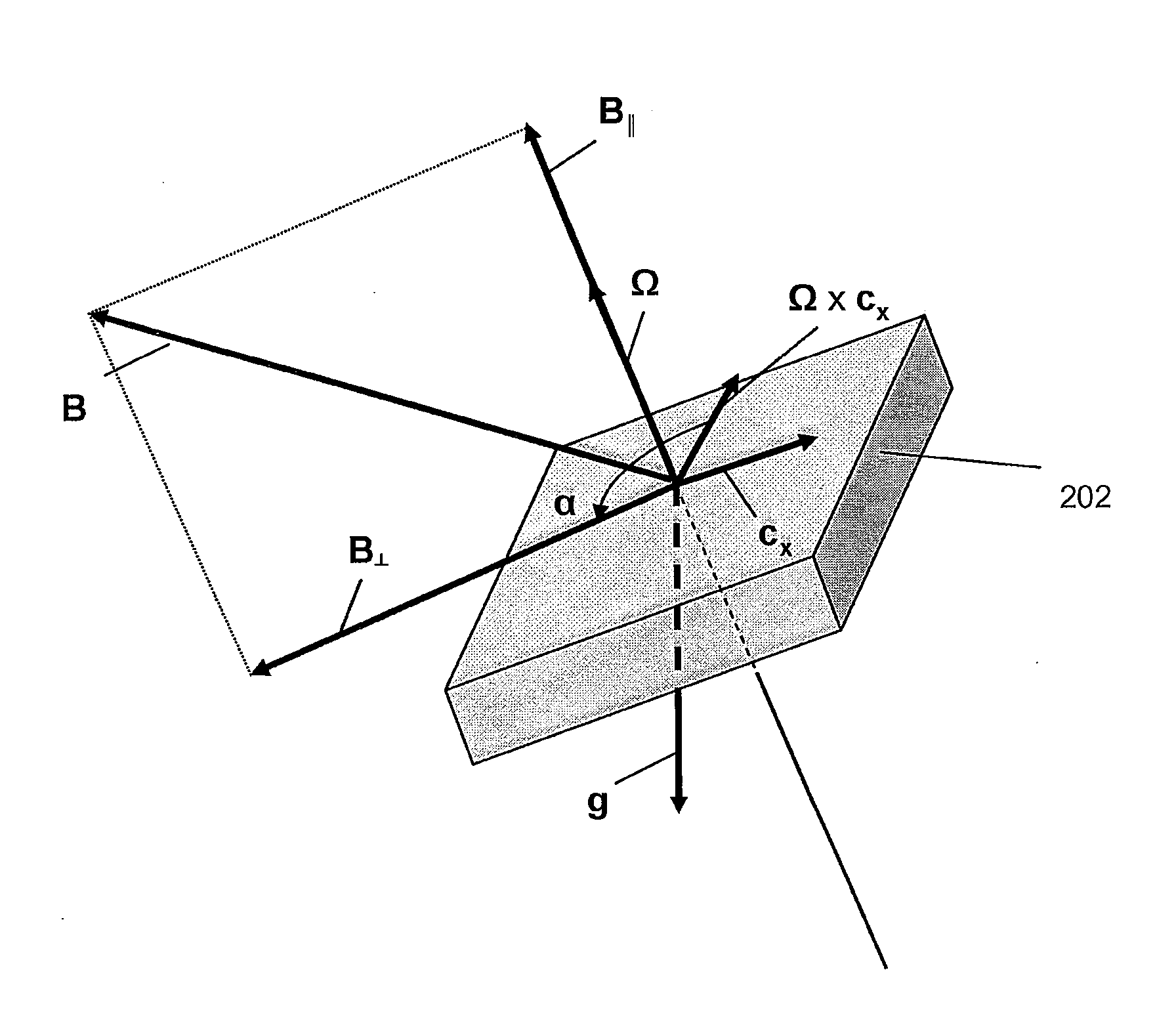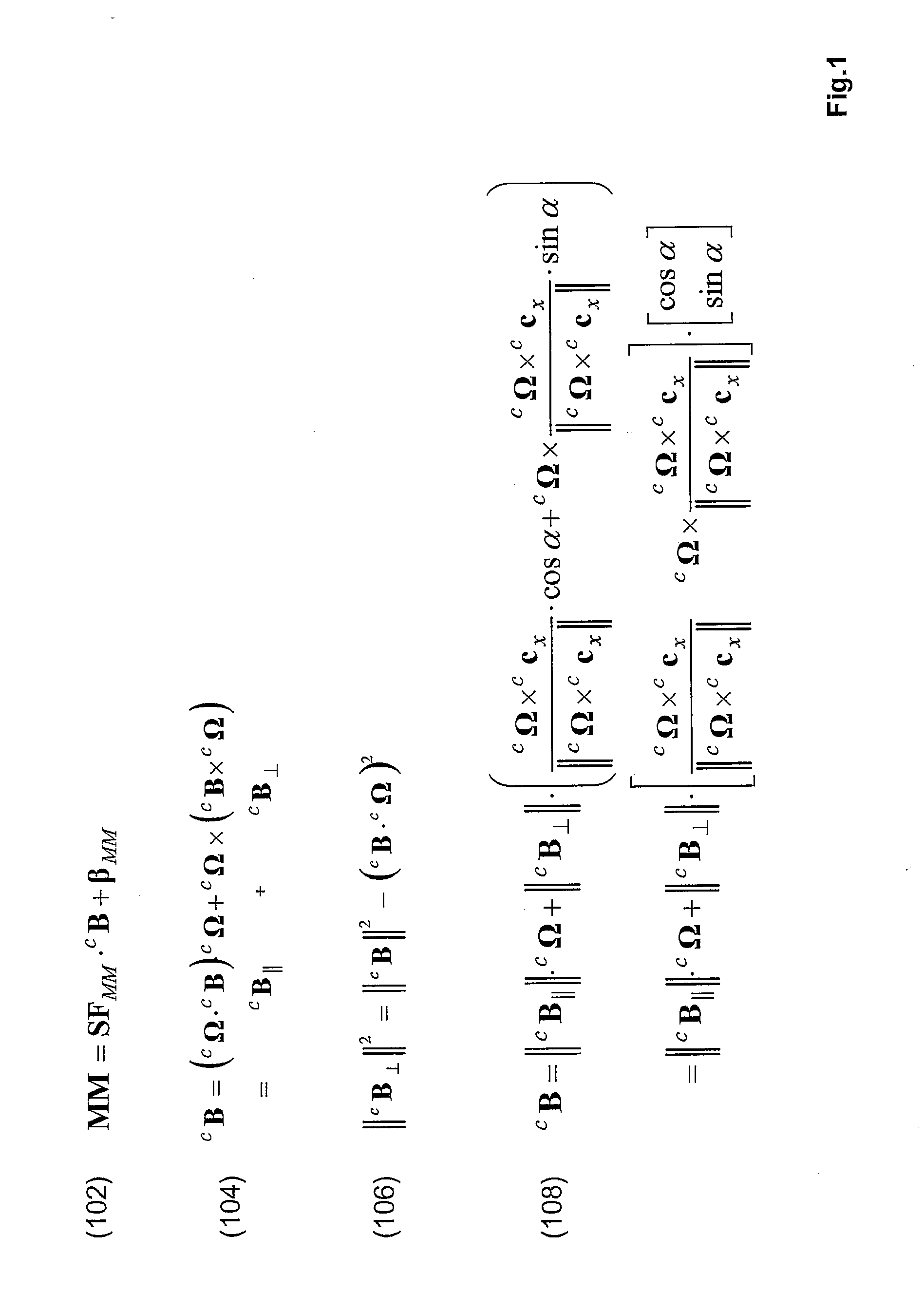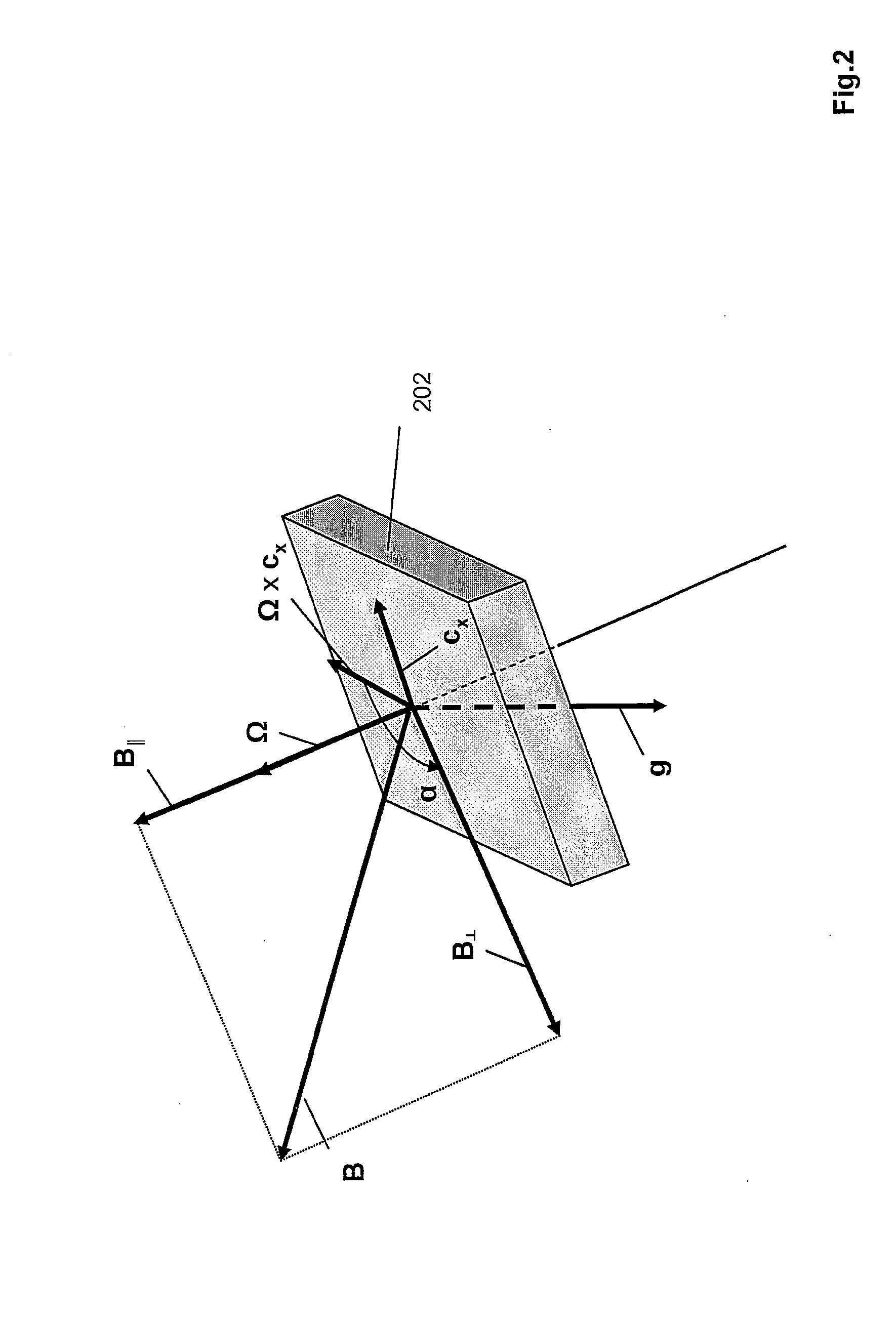Auto-calibration of orientation sensing systems
a technology of orientation sensing and automatic calibration, which is applied in the direction of speed/acceleration/shock measurement devices, instruments, surveying and navigation, etc., can solve the problems of not being able to apply the known approach to configurations using a 2d magnetometer and/or a 2d accelerometer, and the combination of a 3d magnetometer is limited. to achieve the effect of improving accuracy and improving accuracy
- Summary
- Abstract
- Description
- Claims
- Application Information
AI Technical Summary
Benefits of technology
Problems solved by technology
Method used
Image
Examples
Embodiment Construction
[0028]The magnetometer in an electronic compass serves to measure the components of the earth-magnetic field vector. However, ferrous materials in the neighborhood of the magnetometer affect the magnetic field as measured by the magnetometer. If it is not known how these materials affect the measurement from the magnetometer, the orientation or heading angle output of the compass will be inaccurate. Calibration is needed to compensate for the effects of ferrous materials on the measured field, so as to maintain accuracy.
[0029]The magnetometer supplies an output signal vector MM, which is a three-dimensional (3D) vector for a 3D magnetometer, or a 2D (two-dimensional) vector for a 2D magnetometer. Vector MM is related to the 3D earth-magnetic field vector cB referenced with respect to a coordinate system fixed to the compass. The superscript “c” stands for “corpus” (Latin for “body”). An expression for vector MM is given by linear matrix equation (102) in FIG. 1. The quantity SFMM is...
PUM
 Login to View More
Login to View More Abstract
Description
Claims
Application Information
 Login to View More
Login to View More - R&D
- Intellectual Property
- Life Sciences
- Materials
- Tech Scout
- Unparalleled Data Quality
- Higher Quality Content
- 60% Fewer Hallucinations
Browse by: Latest US Patents, China's latest patents, Technical Efficacy Thesaurus, Application Domain, Technology Topic, Popular Technical Reports.
© 2025 PatSnap. All rights reserved.Legal|Privacy policy|Modern Slavery Act Transparency Statement|Sitemap|About US| Contact US: help@patsnap.com



